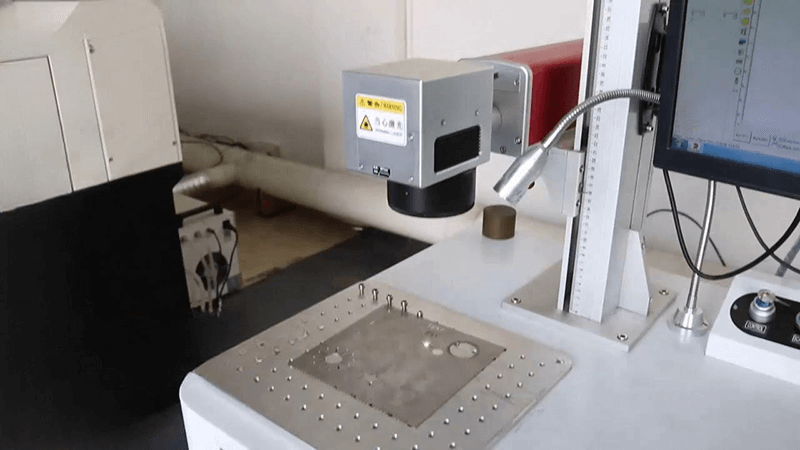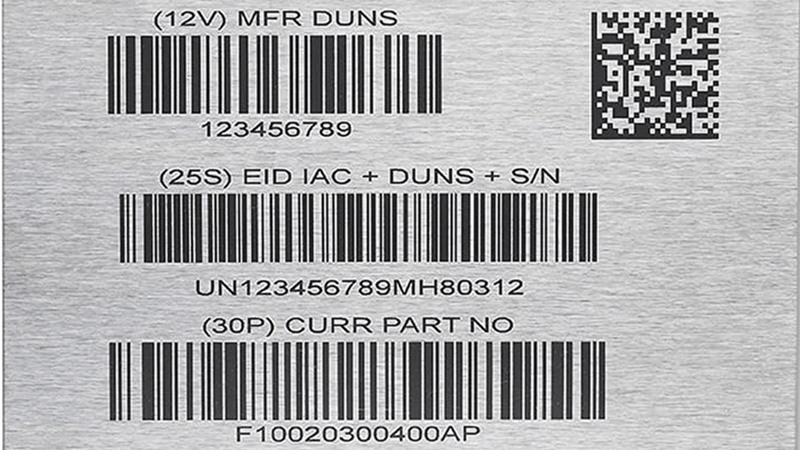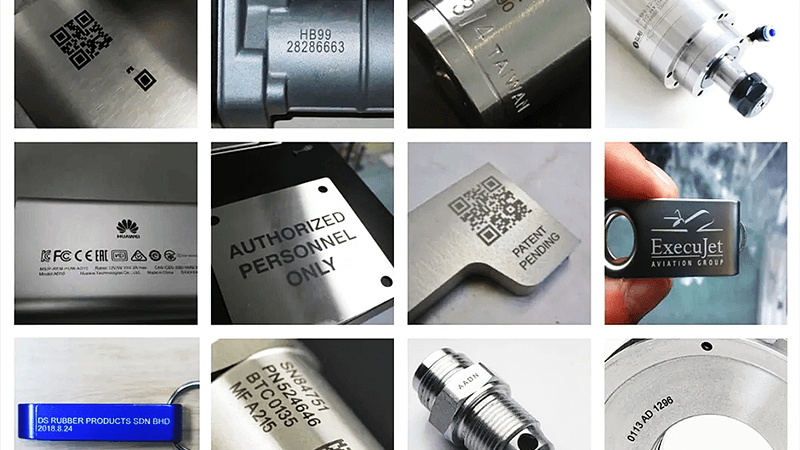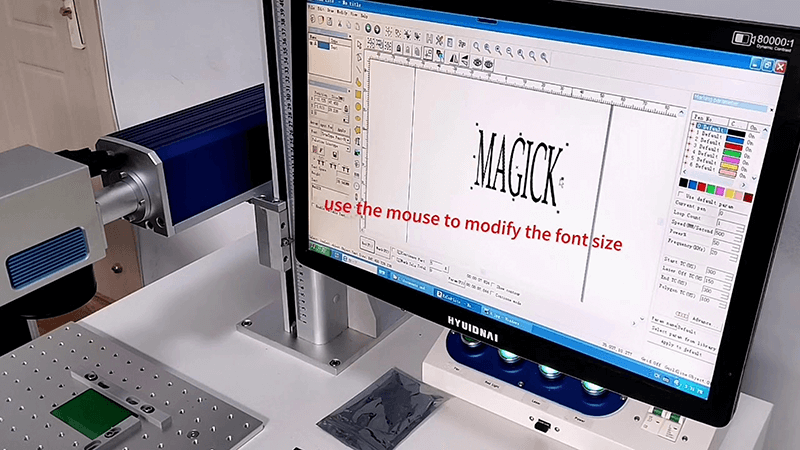Laser marking is changing how companies handle identification. Faded ink, lost stickers, and inconsistent serial numbers used to be daily headaches. Not anymore. I’ve seen our customers completely transform their production with a single laser marking upgrade.
Laser marking offers a clean, permanent solution for logos and serial numbers on nearly any material. It beats ink and labels by a mile when it comes to speed, durability, and precision.
I work with manufacturers every day—automotive, aerospace, medical devices—and their pain points are always the same: traceability, durability, and aesthetics. That’s why I keep recommending laser marking. Let's break down the top questions we get at Kirin Laser.

What is laser serial number marking?
Companies often struggle with tracking their products across production, distribution, and service. Serial numbers are essential, but traditional methods can’t keep up with the durability and clarity requirements of today’s industries.
Laser serial number marking is a high-speed, non-contact process that uses a focused laser beam to permanently mark alphanumeric codes directly onto the surface of a product.
Why it works—and where
Laser serial number marking1 offers reliability that stickers and ink simply can't match. I had one aerospace customer tell me how ink-stamped serials were wearing off after only a few months. This caused massive delays in maintenance due to traceability issues. We stepped in with a 30W fiber laser marker. Within days, their parts had deep, crisp serials that survived heat, oil, and mechanical wear.
Here’s what makes it so effective:
| Feature | Benefit |
|---|---|
| Non-contact method | No tool wear or part deformation |
| Permanent marking2 | Won’t fade, scratch, or peel |
| High speed3 | Perfect for large-batch production |
| Versatility | Works on metal, plastic, ceramics, etc. |
| Precision | Fonts as small as 0.1mm are possible |
At Kirin Laser, we customize marking machines for different workflows—standalone units, conveyor-ready, or robotic-arm integrated. If traceability matters, serial number laser marking is the best route.

How to convert logo for laser engraving?
Logos are more than images—they represent your brand. But making sure a logo looks sharp and professional after laser marking isn’t just a file upload away. You need to prep the logo right.
To prepare a logo for laser engraving, you must convert it into a clean, high-contrast vector file (usually .AI, .DXF, or .SVG), optimized for laser pathing and resolution.
How I help customers prepare logos
Many first-time customers send us PNGs or low-resolution JPGs. That doesn’t work. The laser needs exact path data—shapes, not pixels.
Here’s our usual step-by-step process at Kirin Laser:
-
Start with a vector
Convert the image to vector4 using Adobe Illustrator5 or CorelDRAW. Clean up any unnecessary nodes or rough paths. -
Optimize for contrast
Remove gradients or shading. Lasers don’t do color—they follow outlines and fills. -
Scale appropriately
Engraving areas might be tiny (like on a USB or a bolt). Your design must remain legible at different sizes. -
Test on material
We always do test runs6. The same logo will look different on stainless steel vs anodized aluminum vs ABS plastic.
| File Format | Supported? | Why |
|---|---|---|
| .AI | ✅ | Best for complex vectors |
| .DXF | ✅ | Ideal for CAD-based logos |
| .SVG | ✅ | Great for web-to-laser use |
| .PNG/.JPG | ❌ | Must convert to vector first |
Helping customers prepare their logos has become second nature. When you send a proper file, the laser process becomes seamless. Sharp marks, accurate branding, and zero rework.

What technology is needed to etch a barcode or serial number?
Some customers think laser marking is just for simple shapes or dates. But it’s much more. Barcodes, QR codes, and even Data Matrix codes are fully possible—and extremely useful for supply chain tracking.
To mark barcodes or serial numbers, you need a laser marking machine equipped with precise galvo scanning, compatible with code generation software, and able to focus fine beams with stable frequency.
The setup we usually recommend
At Kirin Laser, we typically suggest fiber lasers7 for metal and CO₂ lasers8 for organic materials like cardboard or plastic film. For barcode marking, here’s what really matters:
1. Laser Source Type
- Fiber laser (20-50W): Best for stainless steel, aluminum, brass
- CO₂ laser (30-60W): Great for PVC, paperboard, wood
2. Software Integration
Our machines come with EZCAD or proprietary barcode generators9. You can import dynamic data (from spreadsheets or ERP systems) to mark serials and barcodes in real time.
3. Focusing and Resolution
Barcode success depends on beam focus and speed. We fine-tune frequency and dwell time to make sure every line or dot is machine-readable.
| Barcode Type | Use Case | Recommended Laser |
|---|---|---|
| QR Code | Packaging, product links | Fiber/CO₂ |
| Data Matrix | Aerospace, automotive, tools | Fiber |
| 1D Barcode (Code 128) | General manufacturing | Fiber |
We recently worked with a client in electronics who needed to laser-mark unique serials + QR codes on 1,000+ aluminum panels per day. We configured a 30W fiber laser with rotary table automation. The output? 30% faster cycle time, 100% scan rate.

What is the difference between laser marking and engraving?
Many customers use the terms interchangeably, but they mean different things—and the wrong one can ruin your application.
Laser marking changes the surface color or texture without cutting deep, while laser engraving removes material to create a deep and permanent groove.
Understand the physical difference
Think of laser marking as changing the surface—like oxidation or carbonization—and engraving as digging into the material.
| Feature | Laser Marking | Laser Engraving |
|---|---|---|
| Depth | 0.01–0.02 mm (very shallow) | 0.1–1 mm (deeper groove) |
| Surface Change | Color, contrast | Texture, tactile feel |
| Speed | Faster | Slightly slower |
| Common Use | Logos, barcodes, serials | Nameplates, stamps, decorative cuts |
| Material Impact | No structural change | Removes material, more aggressive |
In Kirin Laser’s product line, we offer both capabilities. For customers who need cosmetic branding with no tactile change—like a sleek logo on anodized aluminum—we recommend laser marking10. But for mold inserts or metal tools that need deep, durable text, engraving is better.
One automotive client uses our marking system to label dashboards (plastic), while their mold shop engraves cavity codes into hardened steel blocks. Same laser family, different process, different result.

Conclusion
Laser marking11 is not just a modern upgrade—it’s the new standard for logos and serial numbers. It offers speed, durability, and flexibility that older methods simply can’t match. Whether you're marking steel with a QR code or branding your logo on anodized parts, laser technology can handle it. At Kirin Laser, we help manufacturers build smarter, cleaner, and more precise production lines—one beam at a time.
-
Explore the advantages of laser serial number marking for reliability and traceability in various industries. ↩
-
Learn why permanent marking is crucial for ensuring product traceability and durability in manufacturing processes. ↩
-
Discover how high-speed laser marking can enhance production efficiency and reduce downtime in manufacturing. ↩
-
Understanding vector graphics is crucial for creating precise designs for laser engraving, ensuring high-quality results. ↩
-
Adobe Illustrator is a powerful tool for converting images to vector format, essential for laser engraving accuracy. ↩
-
Test runs help ensure that the final product meets quality standards and performs well on different materials. ↩
-
Explore the advantages of fiber lasers for metal marking, including efficiency and precision, to enhance your understanding of laser technology. ↩
-
Learn about CO₂ lasers and their effectiveness in marking organic materials, which can help you choose the right laser for your needs. ↩
-
Discover top barcode generators that integrate with laser marking systems, ensuring efficient and accurate barcode production. ↩
-
Explore this link to understand the nuances of laser marking, its applications, and how it can enhance branding without altering material structure. ↩
-
Find the best laser marking machine and laser marking solutions for Logos and Serial Numbers, clicking this link to get all your needs. ↩





